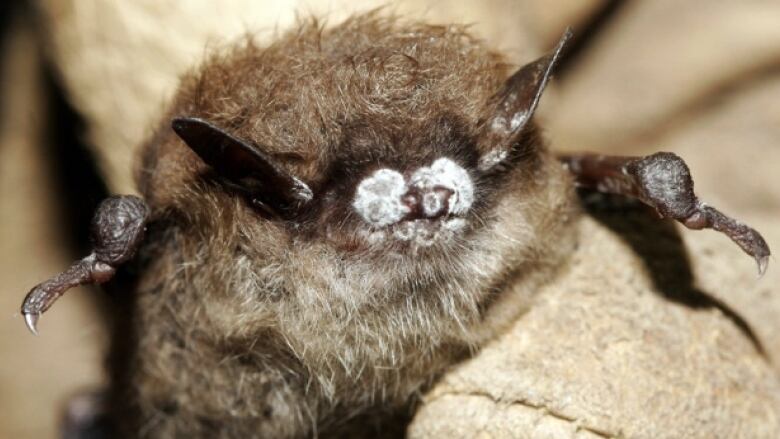New bat treatment 'not a silver bullet' says P.E.I. researcher
'I'm still trying to get a sense of how realistic is it that we ever get to apply these to the bats'

A national bat researcher at the Canadian Wildlife Health Cooperative and P.E.I.'s Atlantic Veterinary College is looking at federal and provincial regulations to see whether a promising treatment for white-nosebat syndrome could be used in Canada.
Researchers at Georgia State University in the U.S. have discovered a live bacteria that seems to slow the fungus that's killed millions of bats across northeastern North America over the past decade. Last month, 75 bats were released in Missouri after treatment.
The down side is, you can never take that back out of the environment, once you put it in. Chris Cornelison, Georgia State University
"I'm still trying to get a sense of how realistic is it that we ever get to apply these to the bats," said Jordi Segers, noting it's been three years since the syndrome was found in P.E.I. bats.
"It's promising for sure," he said, "but it's not a silver bullet, unfortunately." The treatment doesn't cure bats, Segers said,but rather inhibits the growth of fungus on the bats for a period of time.
Segers believes P.E.I. could be a good test site because bats hibernate in wells, as well as mine sites in other parts of the Maritimes, he said.
'A very high urgency to do something'
"There's certainly a very high urgency to do something," Segers said. "Pick maybe a couple of experimental sites to carefully try this at first before you're going to apply this to a large population in a natural site."
The risk with a live bacteria that reduces fungus growth, said Segers, is it could have other unintended consequences if released into the environment.
Segers plans to have a report out by the end of this year on how likely testing could happen in Canada.
'Novel and new'
Chris Cornelison, an applied microbiologist and senior scientist at Georgia State, told CBC Newsits field trials have been successful in treating bats, although testing has so far been limited.

Scientists disperse microorganisms or chemical agents to reduce fungal growth through the air, without having to touch the bats.
"We're looking at essential oils from things like cinnamon bark and lemon grass and we're also evaluating some commercial products, namely Flavorzon," added Cornelison.
"Now our effort is to try and transition that to an actual management setting, which is currently what we're engaged in this winter," he said.
Using live bacteria is "pretty novel and new" and Cornelison suggested using an agent that can spread and continue to produce is risky, since, "the down side is, you can never take that back out of the environment, once you put it in."
The U.S. team should have some solid numbers soon, Cornelison added, on the improved survival rates and reduction of fungus from their treatments.
White-nose syndrome "is the most severe wildlife epidemic that has ever been recorded," Cornelison said, noting in some bat populations mortality has been 100 per cent.
- MORE P.E.I. NEWS IATM stolen from O'Leary Kwik-Way
- MORE P.E.I. NEWS I Heather Moyse to be inducted into World Rugby Hall of Fame
With files from Laura Chapin












_(720p).jpg)


 OFFICIAL HD MUSIC VIDEO.jpg)
.jpg)



























































































